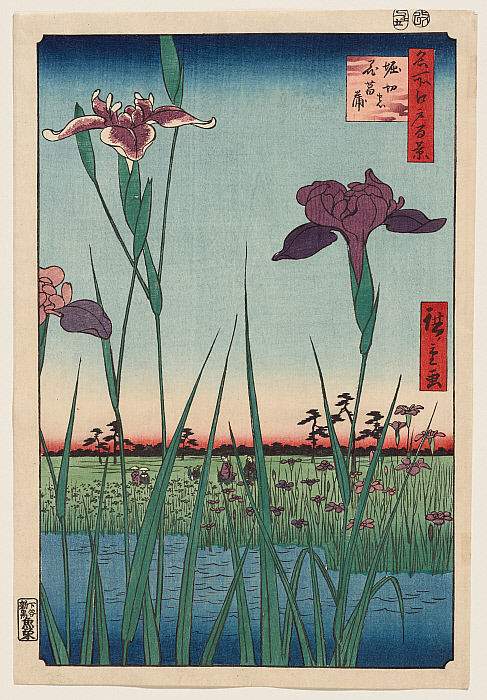Several of these preoccupations continued into the artist's last months at Auvers, set in the lushness of northwest France. Van Gogh celebrated the fecundity of this new setting and the drama of clouds and rain-filled skies until his final days. During this period the audacity of his compositions was sometimes as extreme as his gestural draftsmanship and his bold approach to color and tonality. Some canvases were dedicated to an expanse of variegated cultivated crops while others, such as Green Wheat Fields, Auvers (1890, National Gallery of Art, Washington, DC) exclude almost every trace of human culture in favor of light, earth, and natural growth. Painting outdoors every day in all types of weather conditions, Van Gogh's ambition to create bold, authentic statements about the natural world seems to have been undiminished. In Rain – Auvers (1890, National Museum of Wales, Cardiff), one of several monumental "double square" canvases created in the last weeks before his death, the artist carried his experiments in the presence of nature further than ever, painting earth and sky and the elements themselves. 
Van Gogh and Nature also considers the artist's fascination with nature in a broader perspective by presenting pictures and objects from the Clark's permanent collection that evoke his wider engagement with nature. Included in the exhibition are Tulip Fields at Sassenheim (Claude Monet, 1886), which Van Gogh saw on exhibition in 1886; The Sower (Jean-François Millet, c. 1865); and prints of natural subjects of the kind he admired such as Horikiri Iris Garden (Utagawa Hiroshige I, 1857) from the newly acquired Rodbell Family Collection.
Also in the exhibition are the books La vie et l'oeuvre de J.F. Millet by Alfred Sensier (a copy of which Van Gogh owned), and La nature chez elle by Theophile Gautier, which current research has revealed as a source for the artist's early drawings, as well as copies of popular books that Van Gogh read and valued for their information about the natural world.
A fully illustrated catalogue, Van Gogh and Nature, that chronicles the artist's ongoing relationship with nature throughout his entire career accompanies the exhibition. Vivid color photography and explanatory texts based on new research clarify this central theme of Van Gogh's oeuvre. The catalogue is published by the Clark and distributed by Yale University Press.
Horikiri Iris Garden, Utagawa Hiroshige, 1857, Ansei 4, intercalary 5th month. Color woodblock print. Gift of the Rodbell Family Collection
Editor's Note: Don't overlook the Shop at the Virginia Museum of Fine Arts, Richmond, one of the sources for the Clark's exhibit.






